5 great pitch shifting pedals guitarists need to try
Shift your perspective with these ace pitch shifters
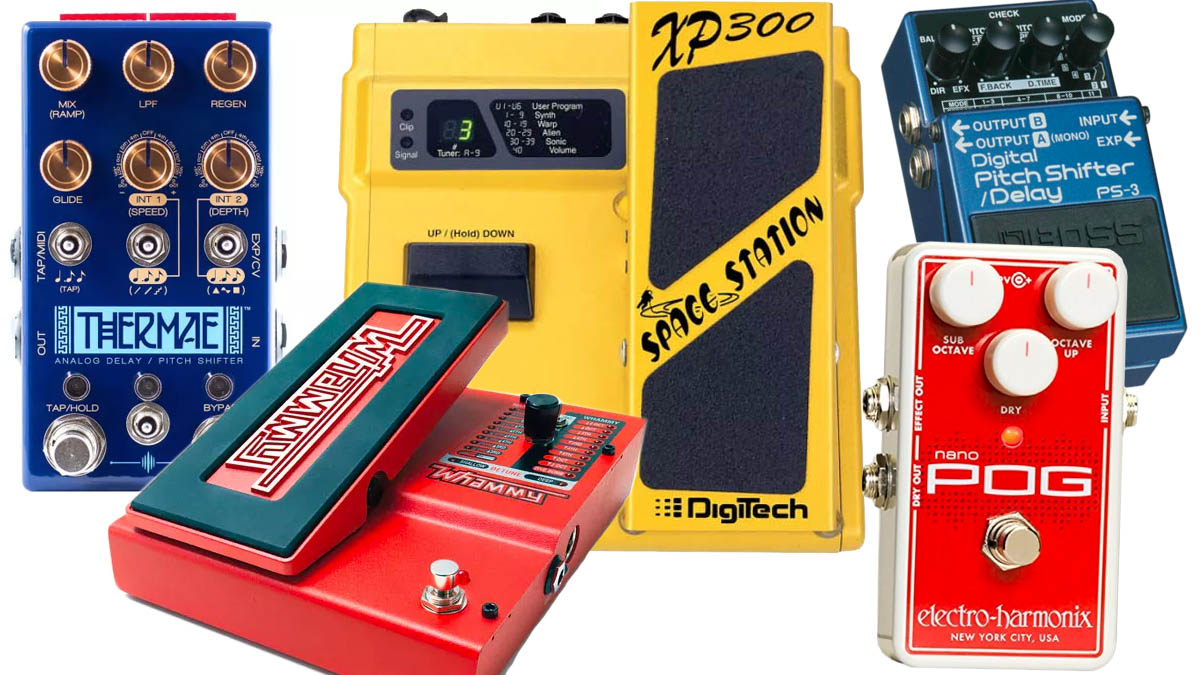
The promise of a pitch shifter is pretty simple. It takes your signal, and changes its pitch. As it turns out, this was quite complex to do, especially before modern digital signal processing. There were various ways of manipulating signals using analogue means, but these were too dirty and imprecise to be 'true' pitch shifters.
That's not to say the Octavia, MXR Blue Box and others don't have their charm, but they were eclipsed by the digital effects that came later. Analogue octave units have their place, but in this piece, we'll be focussing mainly on digital pitch shifters that generate a clear shift or harmony no matter the input note.
History in brief
Though analogue octavers had existed in one form or another since the sixties, their effectiveness was limited. Especially for octave-up harmonising and shifting, a technological shift had to occur. That came in the 1980s with the advent of digital delays.
Buffers of captured audio could be manipulated to give create a pitch-shifted version of the original signal, albeit with quite heavy artifacts. One thing remained elusive, however – good tracking, that is, low latency between the dry signal and the pitch shifted sound.
The first pedal to crack this was the Digitech Whammy, released in 1989. Though Eventide beat Digitech to the punch of an effective digital harmoniser, the Whammy was the first in compact pedal form, at a consumer price point. It was poised to be a classic, but just needed some players to fully realise its potential.
Enter a young guitarist called Tom Morello...
Though the Whammy's artifacts are divisive, many players have used this warble as a timbre in itself, as on Radiohead's My Iron Lung. Products released since have sought to remove or alleviate them, and modern harmonisers and detuners like the EHX POG series and Digitech's own Drop pedal are remarkably clean.
Get the MusicRadar Newsletter
Want all the hottest music and gear news, reviews, deals, features and more, direct to your inbox? Sign up here.
The final bridge to cross was polyphony, sending a chord in and getting a chord out, rather than just a bitcrushed mess. Contemporary units like the EHX Pitch Fork and Whammy V offer polyphonic tracking, but for our money the glitchy crunch of the older units is part of the charm of the effect.
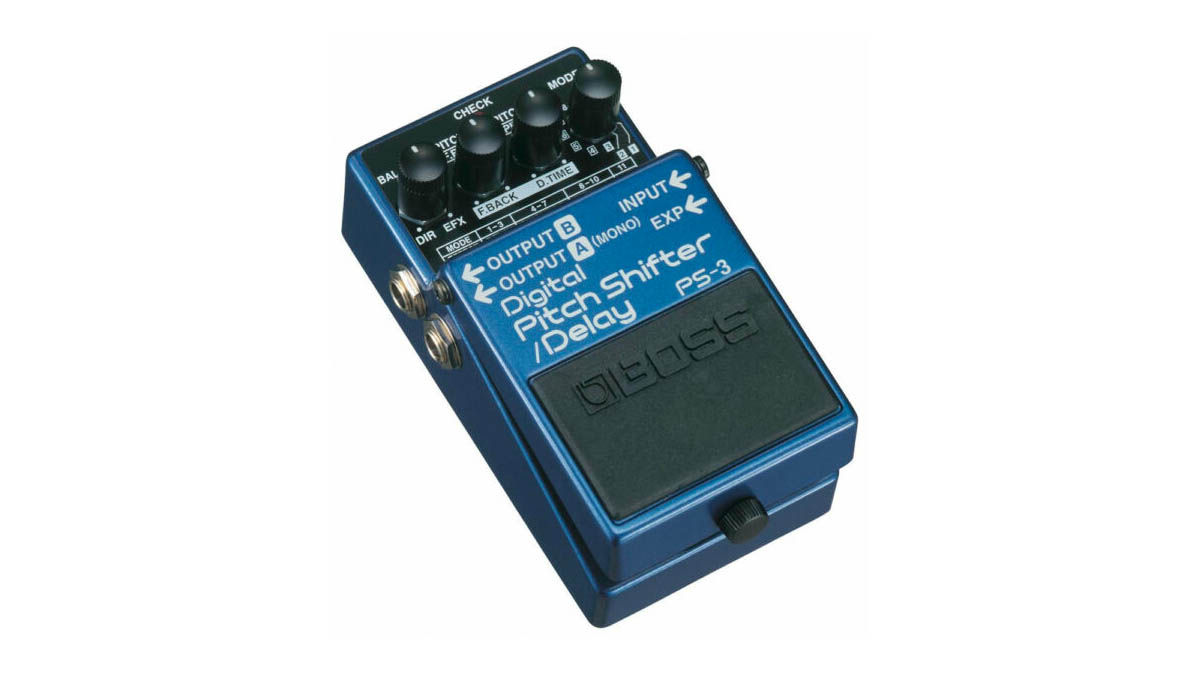
Boss PS-3
Specifications
Reasons to buy
Reasons to avoid
Introduced in 1989, the BOSS PS-2 was the first BOSS pitch shifter. Strictly speaking, it was a Pitch Shifter/Delay. Though its core sound would pale in comparison to that of the Whammy, it just about held its own both as a somewhat feature-limited DD-3 alternative and as a harmoniser.
It wasn't until 1994 that BOSS really hit their stride with the concept. The PS-3 boasted ten delay and pitch modes as well as an eleventh expression-controlled patch. There's three delays, choruses and single pitch modes, a straight-up pitch-shifter on mode 5, as well as a very early example of a shimmer octave sound, on mode 7.
It was this mode that can be heard on Cave In's cult classic Jupiter as well as records by their friends in Converge. Though there have been many higher fidelity combinations of delay and pitch shifting since, there remains something elusively exciting about the gritty PS-3. It's not a pristine delay, with the repeats blooming and smearing, but then, it's not an ambient shimmer reverb either.
It's... the PS-3, and should you be able to find one it's definitely worth trying.
The PS-3 isn't in production anymore, so if you want to buy new then you'll be looking at the Boss PS-6 Harmonist.
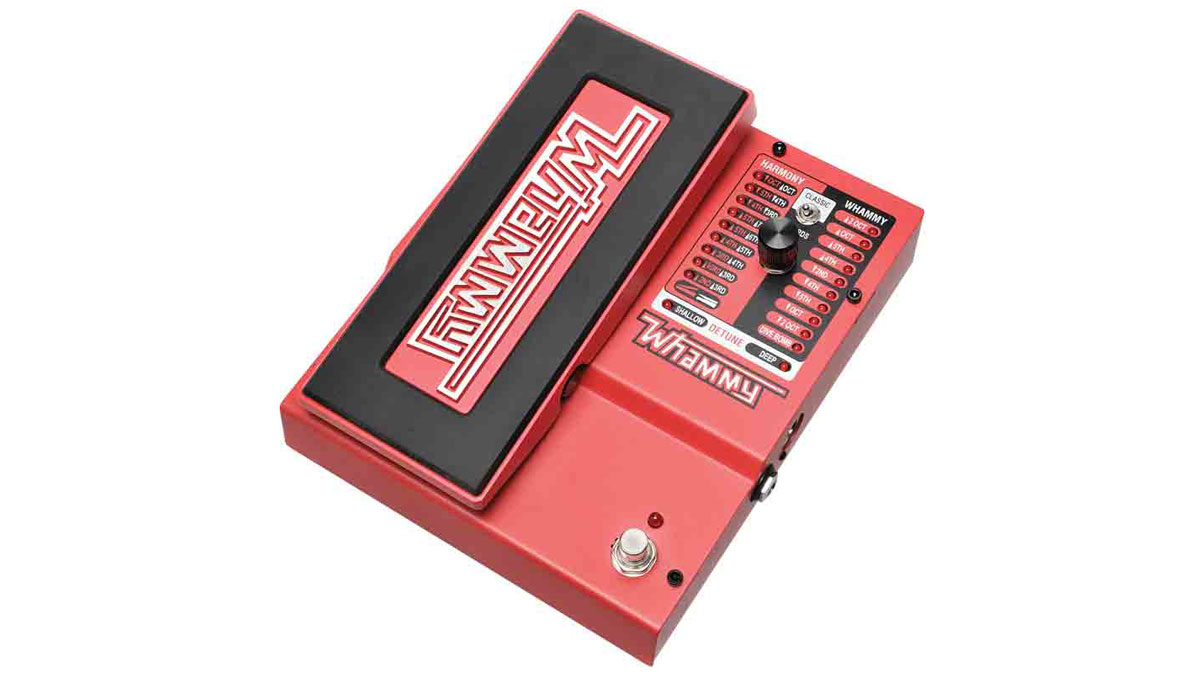
Specifications
Reasons to buy
Reasons to avoid
When it comes to pitch shifters, the Whammy is the original and best. If you've not tried one yet, then you owe it to yourself to do so.
Tom Morello ripped up the guitar rulebook with the Whammy, but he's not the only player to lean on the mean, red, pitch-shifting machine. Players as diverse as St Vincent, Steve Vai, Billy Corgan, Matt Bellamy, Jack White, David Gilmour and Joe Duplantier have found inspiration in its plethora of modes.
If you include variants, the list of players only gets longer. Justin Chancellor's basslines for Tool wouldn't have been the same without the Bass Whammy.
Modern math rock wouldn't exist without it, with riffs like Masa by Adebisi Shank or Cramm by Three Trapped Tigers based on the Whammy's upper-octave scream. Elsewhere, its sound defined Radiohead's The Bends and Ok Computer, laying the template for alternative and progressive bands for a generation.
Though it used to be expensive for a pedal, it's now relatively affordable, especially in Europe. Other boutique octave pedals have outstripped the Whammy in price, sometimes quite drastically. This is even though many don't offer the same depth of settings or quality of tracking.
In terms of modes, the Whammy V has not only pitch shift modes, with +/-2 octaves, but also a choice between the classic Whammy sound and a new polyphonic mode. There's also a range of harmony intervals, a dive bomb, two chorus modes and a subtle drop-tune that can emulate the sound of leaning on a Jazzmaster whammy bar. Moreover, the Whammy can also be MIDI-controlled, allowing all sorts of experimental usage, from ribbon controllers to sequencers.
The main issue with the Whammy is the sheer amount of space that it takes up, but Digitech addressed this with the Whammy Ricochet. Annoyingly, it's still side-jacks, so takes up more space than it should, but you can now fit two Ricochets into the space required for a single Whammy V.
Alternatives: Whammy DT, Whammy Ricochet
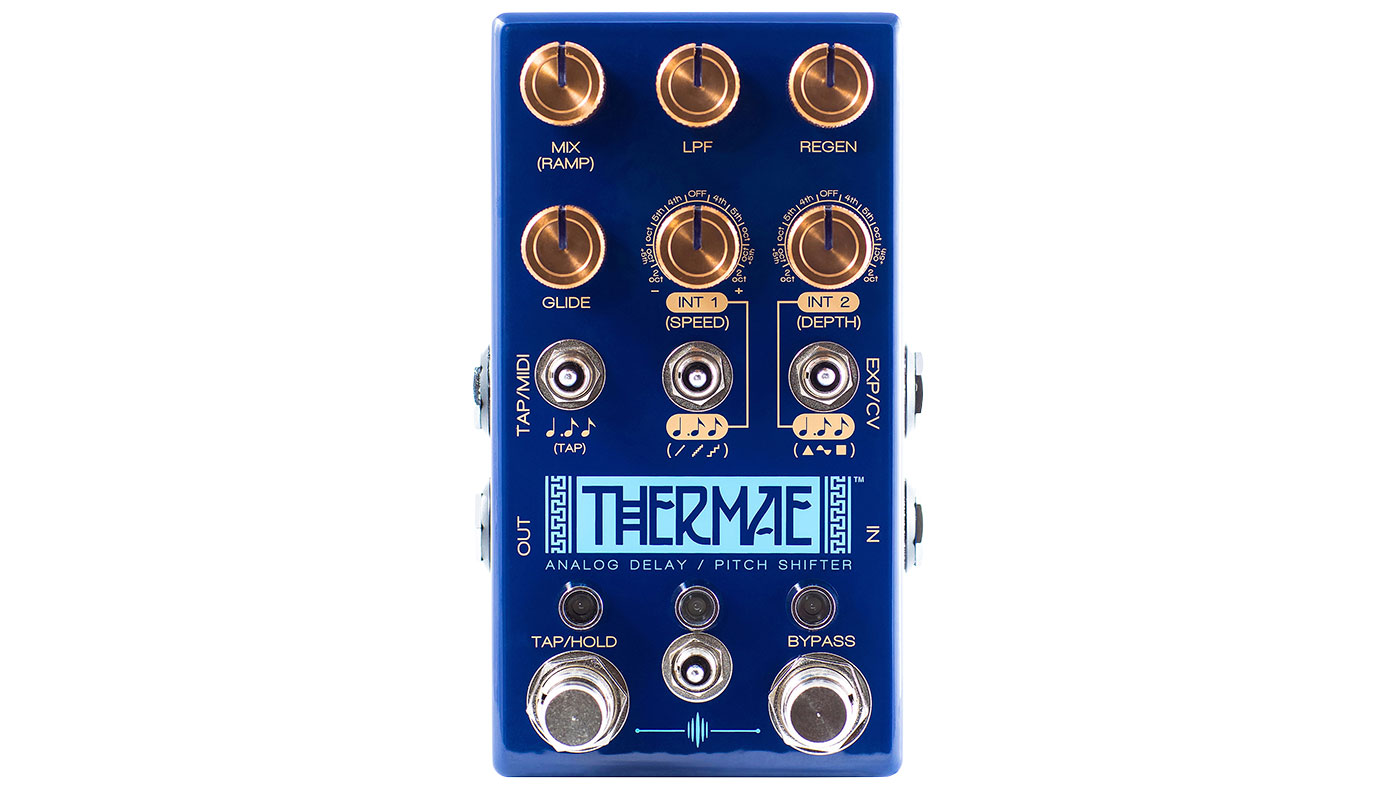
Chase Bliss Thermae
Specifications
Reasons to buy
Reasons to avoid
Indulging the BOSS PS-3 as a pitch shifter has an additional benefit - it means we can sneak this oddball in. While the PS-3 is a pitch shifter and/or a delay, the Thermae differs in that the two effects can't be separated. One of the more misunderstood Chase Bliss pedals, the analogue Thermae is a brilliant and baffling concept.
It uses four re-issued MN3005 BBD analogue delay chips paired with a microcontroller to create something unique – a pitch-shifted analogue delay. Along with tap divisions, it also has patterns, ramping, glissando and all the DIP-switch controlled options you could possibly desire via the top panel.
At its most subtle, it can create washes of tape-like modulated delays. At its most extreme it ventures more into the territory of the PS-3, with glitchy, artifact-heavy delays in almost arpeggiator-like patterns.
It's definitely weird, even by Chase Bliss's standards, but it's also deep, musical and rewarding.
Alternatives: None
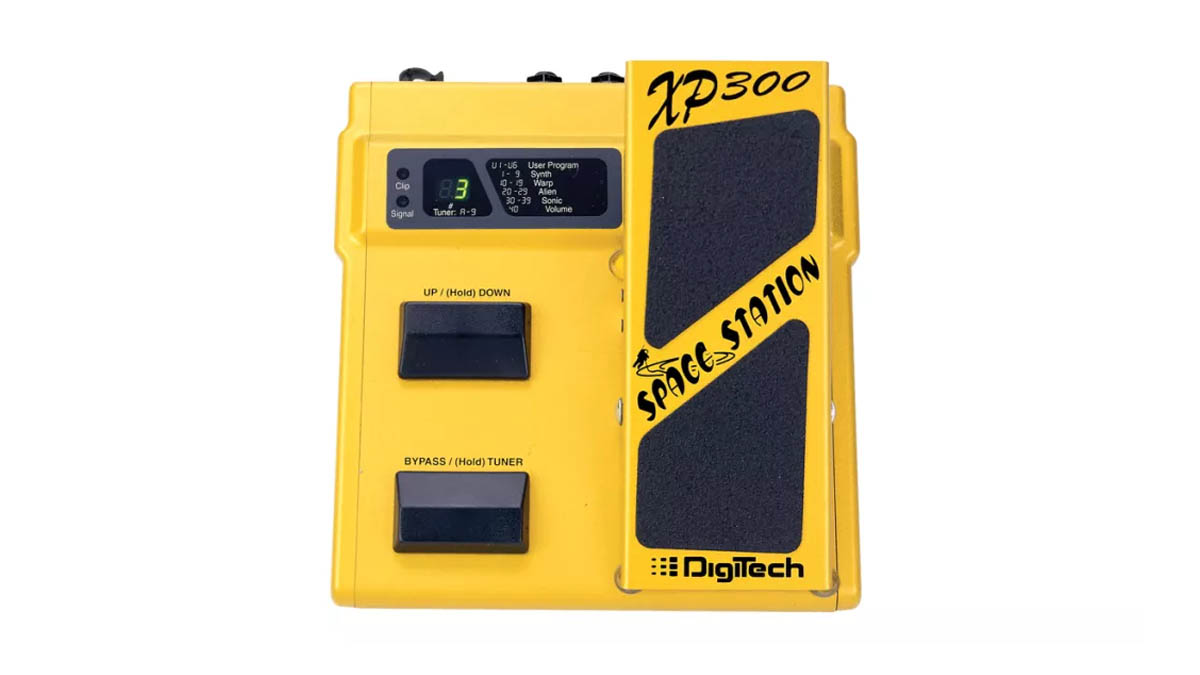
Digitech XP-300 Space Station
Specifications
Reasons to buy
Reasons to avoid
An offshoot of the Whammy, specifically the XP-100 Whammy/Wah, the Space Station is a different beast. With the XP-100 to XP-400, Digitech's engineers were let totally off the chain, and many of the strange patches from this series inspired whole pedals of their own down the line.
This is particularly true of the XP-300, a pedal maligned at the time by many as unusable. Indeed, its run didn't last that long, and until recently it was hard to find not so much due to demand or price, but simply because there weren't all that many made. Used prices were around a couple of hundred bucks at most.
However, some players and builders were paying attention. Its first few modes are rolling, pitch-shifted pads that aren't quite a pad and aren't quite reverb either. They sound most like a very limited granular reverb, albeit a very crunchy one. Each of these pads has a harmony interval applied as well, for added sheen.
Elsewhere, the warp modes are the real deal, with a pseudo real-time reverse mode, and tape stop that still remains one of the most fun effects ever made. After that, there's still another 35+ modes that take in everything from arpeggiators to auto pitch-shifts, to laser-gun zaps.
While it's far from a dedicated pitch shifter, most of its modes rely on pitch-shifting, just used in an unconventional way. A good example of this would be the tape stop, where the line between manipulating playback speed and shifting pitch blurs.
Alternatives: Red Panda Tensor, EQD Rainbow Machine, Hologram Electronics Microcosm
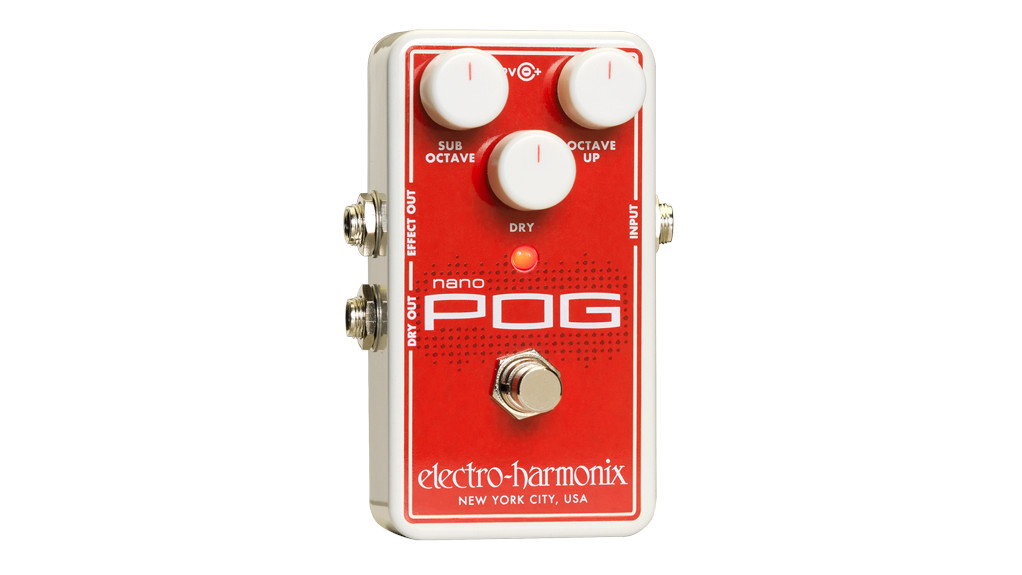
Specifications
Reasons to buy
Reasons to avoid
If we acknowledge that modern math rock owes a huge debt to the Digitech Whammy, then we have to also show due respect to the EHX POG. The various big-box POGs redefined just how good a harmony pedal could sound, yes, but they also featured very low latency and great bass sounds.
It's for this latter reason that compact two-piece bands, or bands without bassists turned to it in order to beef up their low-end. Duos like Cleft were able to turn monstrous drop-tuned riffs on the guitar into rumbling juggernauts, but it isn't a one-way street.
To wit, some bass players use it to add upper octaves. Although he's very secretive about the gear that he uses, Mike Kerr from Royal Blood is said to use a POG2 at the core of his sound. For just the core effect, either the Micro or Nano POG offers a cheaper and more compact alternative to the full-fat POG2.
If you're playing bass and need higher octaves, use its wet out to send the higher octave to a guitar amp. Alternatively, if you're a guitarist using it to emulate a bass guitar, do the same, but run the sub out to a bass amp.
Alternatives: EHX Micro POG, EHX POG2
Alex Lynham is a gear obsessive who's been collecting and building modern and vintage equipment since he got his first Saturday job. Besides reviewing countless pedals for Total Guitar, he's written guides on how to build your first pedal, how to build a tube amp from a kit, and briefly went viral when he released a glitch delay pedal, the Atom Smasher.
“A pedal that sings with harmonic richness and blooming touch response”: Tone King offers up boutique tube amp tones for your pedalboard with the Imperial Preamp
“Each and every unit is perfectly dialled in to the 'sweet spot' that can be so elusive to find in vintage pedals”: Pigtronix’s Gas Giant is a high-gain fuzz pedal with a FET-driven onboard noise gate










